Relative Risk Ratio and Odds Ratio September 2, , 500 pm The Relative Risk Ratio and Odds Ratio are both used to measure the medical effect of a treatment or variable to which people are exposed The effect could be beneficial (from a therapy) or harmful (from a hazard)Relative Risk and Odds Ratio for the obese 3) Overall, you can see that decreasing the baseline incidence will decrease the odds ratio (300 in those who are nonobese versus 129 in those who are obese) Obviously, these results run counter to expected results, putting the onus on the researcher to justify them Similarly, you should find that increasing the incidence will increase the odds ratioFor estimates of relative risk ratios, this becomes logarithm We can specify this manually, or just use a builtin family for our generalized linear model for which the logarithm is the canonical link fucntion, and hence the default
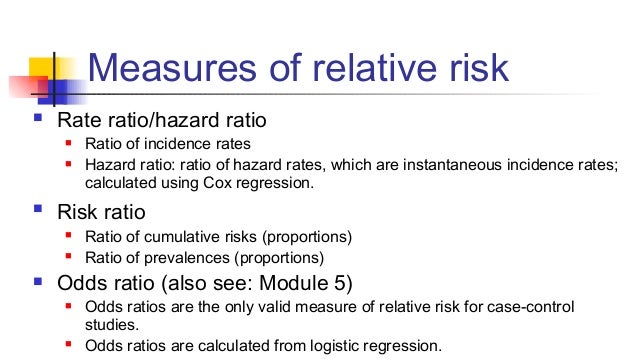
Math3010 Week 6
Odds ratios vs relative risk
Odds ratios vs relative risk-In metaanalysis for relative risk and odds ratio, studies where a=c=0 or b=d=0 are excluded from the analysis (Higgins & Green, 11) Literature Altman DG (1991) Practical statistics for medical research London Chapman and Hall Armitage P, Berry G, Matthews JNS (02) Statistical methods in medical research 4 th ed Blackwell ScienceThe odds ratio can be interpreted the same way as a risk ratio Odds Ratio = (10/19) / (9/19) = 11 This certainly provides no compelling evidence to suggest an association with Papa Gino's, but, as we did with the risk ratio, we could compute a 95% confidence interval for the odds ratio, and we could also compute a p value



Using Odds Ratio In Case Control Studies Youtube
In metaanalysis for relative risk and odds ratio, studies where a=c=0 or b=d=0 are excluded from the analysis (Higgins & Green, 11) Literature Altman DG (1991) Practical statistics for medical research London Chapman and Hall Armitage P, Berry G, Matthews JNS (02) Statistical methods in medical research 4 th ed Blackwell ScienceOdds ratio is similar to relative risk In the sheepskin trial the relative risk was 058 and the odds ratio was 054 For most clinical trials where the event rate is low, that is less than 10% of all participants have an event, the odds ratio and relative risk can be considered interchangeableSometimes, we see the log odds ratio instead of the odds ratio The log OR comparing women to men is log(144) = 036 The log OR comparing men to women is log(069) = 036 log OR > 0 increased risk log OR = 0 no difference in risk log OR < 0 decreased risk Odds Ratio 0 5 10 15 More on the Odds Ratio Log Odds Ratio4 2 0 2 4
The relative risk is different from the odds ratio, although the odds ratio asymptotically approaches the relative risk for small probabilities of outcomesIf IE is substantially smaller than IN, then IE/(IE IN) ≈ IE/IN Similarly, if CE is much smaller than CN, then CE/(CN CE) ≈ CE/CN Thus, under the rare disease assumption = () () ≈ ⋅ ⋅ =In epidemiological terms, the odds ratio is used as a point estimate of the relative risk in retrospective studies I understand that odds ratio is calculated in case control studies, while relative risk is calculated in cohort studiesOdds Ratio vs Relatives Risiko Das relative Risiko (RR) ist einfach die Wahrscheinlichkeit oder Beziehung zweier Ereignisse Nehmen wir an, A ist Ereignis 1 und B ist Ereignis 2 Man kann das RR erhalten, indem man B von A oder A / B dividiert
Perspective of Relative Differences (Ratios) vs Absolute Differences Relative risk comparisons and risk differences provide two different perspectives on the same information Relative risk, ie, risk ratios, rate ratios, and odds ratios, provide a measure of the strength of the association between a factor and a disease or outcomeThe basic difference is that the odds ratio is a ratio of two odds (yep, it's that obvious) whereas the relative risk is a ratio of two probabilities (The relative risk is also called the risk ratio) Let's look at an example Relative Risk/Risk Ratio Suppose you have a school that wants to test out a new tutoring programFor example, an odds of 001 is often written as 1100, odds of 033 as 13, and odds of 3 as 31 Odds can be converted to risks, and risks to odds, using the formulae;



How To Calculate An Odds Ratio Youtube



Bk Plots Involving Risk Difference Relative Risk And Odds Ratio Download Scientific Diagram
When two groups are under study or observation, you can use two measures to describe the comparative likelihood of an event happening These two measures are the odds ratio and relative risk Both are two different statistical concepts, although so much related to each other Relative risk (RR) is simply the probability or relationship of two eventsOdds ratio vs relative risk Odds ratios and relative risks are interpreted in much the same way and if and are much less than and then the odds ratio will be almost the same as the relative risk In some sense the relative risk is a more intuitive measure of effect size Note that the choice is only for prospective studies were the distinctionRisk Ratio vs Odds Ratio Whereas RR can be interpreted in a straightforward way, OR can not A RR of 3 means the risk of an outcome is increased threefold A RR of 05 means the risk is cut in half But an OR of 3 doesn't mean the risk is threefold;



A Beginner S Guide To Interpreting Odds Ratios Confidence Intervals And P Values Students 4 Best Evidence



1 Relative Risks Odds Ratios Or Hazard Ratios Of Risk Factors For Download Table
The relative risk and the odds ratio are very similar when events are rare (Stare & MaucortBoulch, 16), for example, when predators kill livestock and the effectiveness of livestock protectionThe relative risk is best estimated using a population sample, but if the rare disease assumption holds, the odds ratio is a good approximation to the relative risk — the odds is p / (1 − p), so when p moves towards zero, 1 − p moves towards 1, meaning that the odds approaches the risk, and the odds ratio approaches the relative riskAn Odds Ratio (OR) then is simply the comparison of two odds, OR=Odds(A)/Odds(B) The Relative Risk (RR) is simply the comparison of two risks or probabilities, RR=Probability(A)/Probability(B) This is made more clear when the term is referred to as the Risk Ratio



Odds Ratio Article


Epidemiology Stepwards
Example Data Odds ratio versus relative risk A hypothetical data set was created to illustrate two methods of estimating relative risks using SAS The outcome generated is called lenses, to indicate if the hypothetical study participants require corrective lenses by the time they are 30 years oldComparing OR and Risk Ratio OR Farther from 1 The schematic below illustrates the point that, unless both the risk ratio and the odds ratio are 10 (no difference), The odds ratio is always farther from 10 than the risk ratio Larger if the risk ratio is greater than 10 and smaller if the risk ratio is less than 10Examples of measures of association include risk ratio (relative risk), rate ratio, odds ratio, and proportionate mortality ratio Risk ratio Definition of risk ratio A risk ratio (RR), also called relative risk, compares the risk of a health event (disease, injury, risk factor, or death) among one group with the risk among another group



Converting An Odds Ratio To A Range Of Plausible Relative Risks For Better Communication Of Research Findings The Bmj



Solved Using Relative Risk And Odds Ratio I Am Confused Chegg Com
Odds Ratio, Hazard Ratio and Relative Risk Janez Stare1 Delphine MaucortBoulch2 Abstract Odds ratio (OR) is a statistic commonly encountered in professional or scientific medical literature Most readers perceive it as relative risk (RR), although most of them do not know why that would be true But since such perception is mostlyOdds Ratio vs Relatives Risiko Das relative Risiko (RR) ist einfach die Wahrscheinlichkeit oder Beziehung zweier Ereignisse Nehmen wir an, A ist Ereignis 1 und B ist Ereignis 2 Man kann das RR erhalten, indem man B von A oder A / B dividiertThe odds ratio supports clinical decisions by providing information on the odds of a particular outcome relative to the odds of another outcome In the endocarditis example, the risk (or odds) of dying if treated with the new drug is relative to the risk (odds) of dying if treated with the standard treatment antibiotic protocol
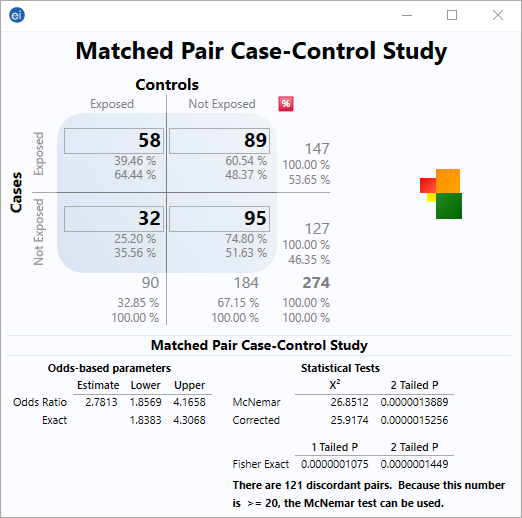


Matched Pair Case Control Statcalc User Guide Support Epi Info Cdc


Definition And Calculation Of Odds Ratio Relative Risk Stomp On Step1
The odds ratio (OR) is the odds of an event in an experimental group relative to that in a control group ■ An RR or OR of 100 indicates that the risk is comparable in the two groups A value greater than 100 indicates increased risk;Odds ratio versus relative risk Since it is a ratio of ratios, the odds ratio is very difficult to interpret The relative risk is easier to interpret, so the odds ratio alone is not very helpful However, there are certain commonly occurring situations in which the estimate of the relative risk is not very good and the odds ratio can be usedThe relative risk and the odds ratio are measures of association between exposure status and disease outcome in a population Relative risk In epidemiology, relative risk (RR) can give us insights in how much more likely an exposed group is to develop a certain disease in comparison to a nonexposed group
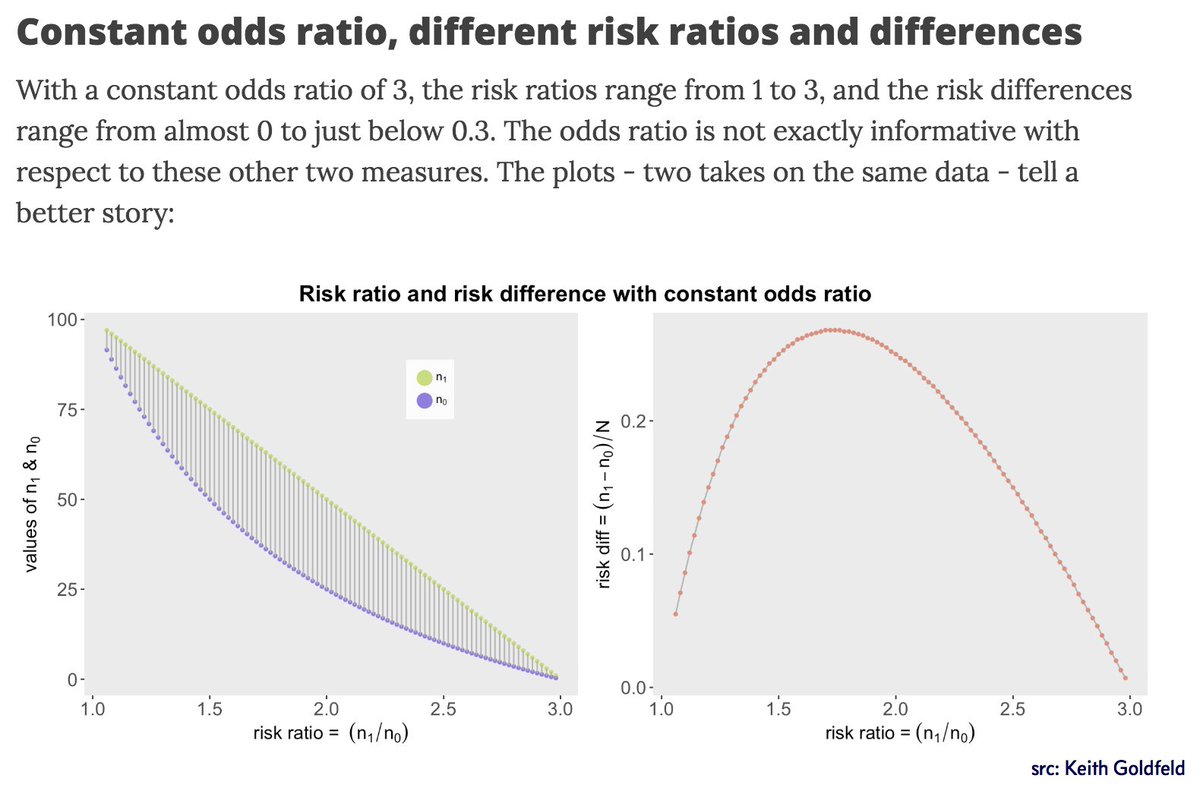


Mara Averick En Twitter As Someone Who Asks For Odds Ratios And Relative Risk At The Vet I This Post How The Odds Ratio Confounds A Brief Study In A


Studying Studies Part I Relative Risk Vs Absolute Risk Peter Attia
A crude odds ratio can be converted to a crude risk ratio risk ratio = odds ratio/(1 − p0) (p0 × odds ratio), in which p0 is the outcome prevalence (risk) among the unexposed Some have applied this formula to an adjusted odds ratio to obtain an adjusted risk ratio 49 This method can produce biased risk ratios and incorrect confidenceThe relative risk (RR) and the odds ratio (OR) are the two most widely used measures of association in epidemiology The direct computation of relative risks is feasible if meaningful prevalencesEstimating the relative risk in cohort studies and clinical trials of common outcomes American journal of epidemiology May 15 03;157(10) The potential for bias from using odds ratios in prospective studies is discussed, and simulation studies are used to provide guidance on implementation of relative risk regression
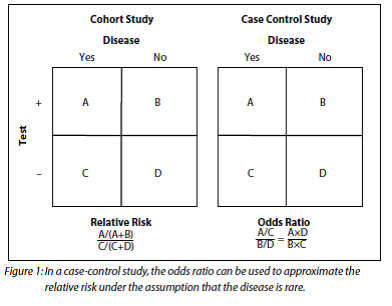


How To Be Awesome At Biostatistics And Literature Evaluation Part Ii Tl Dr Pharmacy



Measures Of Effect Relative Risks Odds Ratios Risk Difference And Number Needed To Treat Sciencedirect
Both the odds ratio and the relative risk compare the relative likelihood of an event occurring between two groups The relative risk is easier to interpret and is consistent with general intuition Some designs, however, allow only for the calculation of the odds ration Covariate adjustment is easier for an odds ratio Finally, the odds ratio avoids ambiguity by being invariant to lthe labeling of the outcome measureA value lower than 100 indicates decreased riskThe interpretation of an odds is more complicated than for a risk The simplest way to ensure that the interpretation is correct is to first convert the odds into a risk


Relative Risk Ratio Vs Odd Ratio Ppt Authorstream



Cureus What S The Risk Differentiating Risk Ratios Odds Ratios And Hazard Ratios
Odds ratio versus relative risk Since it is a ratio of ratios, the odds ratiois very difficult to interpret The relative risk is easier to interpret,so the odds ratio alone is not very helpful However, there are certaincommonly occurring situations in which the estimate of the relativerisk is not very good and the odds ratio can be used toThe relative risk is best estimated using a population sample, but if the rare disease assumption holds, the odds ratio is a good approximation to the relative risk — the odds is p / (1 − p), so when p moves towards zero, 1 − p moves towards 1, meaning that the odds approaches the risk, and the odds ratio approaches the relative riskAn Odds Ratio (OR) then is simply the comparison of two odds, OR=Odds (A)/Odds (B) The Relative Risk (RR) is simply the comparison of two risks or probabilities, RR=Probability (A)/Probability (B) This is made more clear when the term is referred to as the Risk Ratio Let's look at this graphically


Odds Ratio Vs Relative Risk Drone Fest
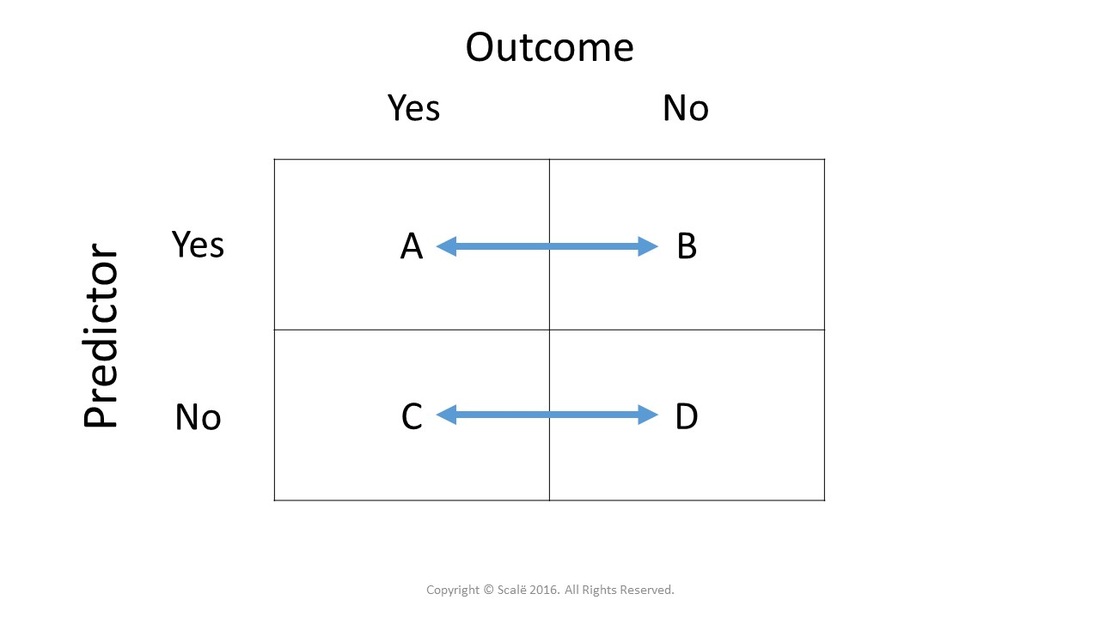


Calculate Relative Risk With 95 Confidence Intervals
For estimates of odds ratios, this is logit (ie the logarithm of the odds of the mean);The relative risk and the odds ratio are measures of association between exposure status and disease outcome in a population Relative risk In epidemiology, relative risk (RR) can give us insights in how much more likely an exposed group is to develop a certain disease in comparison to a nonexposed groupOdds ratios (OR) are commonly reported in the medical literature as the measure of association between exposure and outcome However, it is relative risk that people more intuitively understand as a measure of association Relative risk can be directly determined in a cohort study by calculating a risk ratio (RR)



Odds Ratio Relative Risk



Pdf Understanding Relative Risk Odds Ratio And Related Terms As Simple As It Can Get Semantic Scholar
Odds Ratios Versus Relative Risk Odds Ratios Versus Relative Risk Published on December 14, 15 by Howard Herrell, MD Many great things have been written about the difference between Odds Ratios (OR) and Relative Risks (RR) Every medical student at some point has been taught the difference Yet these statistical terms are confused andWhen the disease is rare, the odds ratio will be a very good approximation of the relative risk The more common the disease, the larger is the gap between odds ratio and relative risk In our example above, p wine and p no_wine were 0009 and 0012 respectively, so the odds ratio was a good approximation of the relative risk OR = 0752 and RR = 075The odds ratio reflects the relative odds for the two groups—in this case, 656 ( ÷ ) This contrasts with the relative risk ratio, which is 524 (2381 ÷ 455) In some cases, the odds ratio and relative risk ratio are closer together, although the two ratios are calculated using different equations
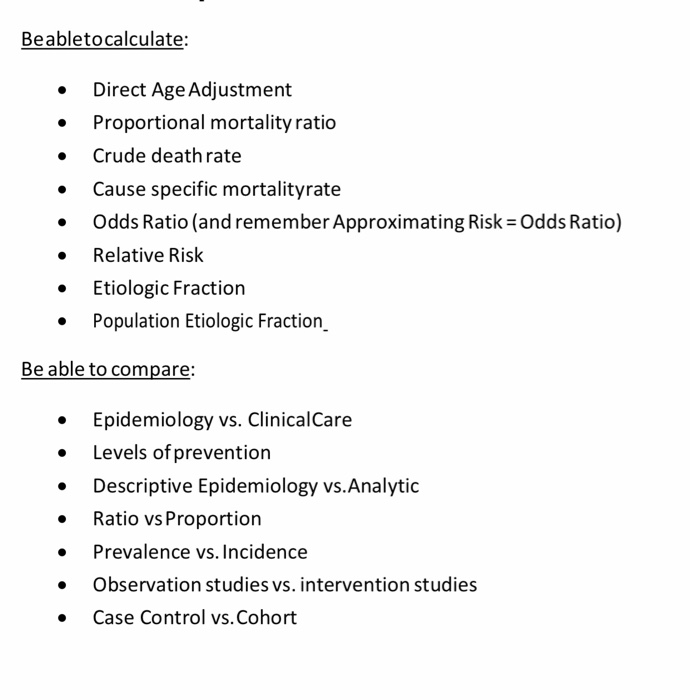


Beabletocalculate Direct Age Adjustment Proport Chegg Com



Odds Ratio Relative Risk Calculation Definition Probability Odds Youtube
Odds Ratio 와 Relative Risk 를 비교해보자 네덜란드 헤이그의 1972–1981년 설문조사 결과에 따르면, 애완용 새를 기르는 것이 폐암에 걸리는 것과 관련이Relative Risk and Odds Ratio for the obese 3) Overall, you can see that decreasing the baseline incidence will decrease the odds ratio (300 in those who are nonobese versus 129 in those who are obese) Obviously, these results run counter to expected results, putting the onus on the researcher to justify them Similarly, you should findBoth the odds ratio and the relative risk compare the relative likelihood of an event occurring between two groups The relative risk is easier to interpret and is consistent with general intuition Some designs, however, allow only for the calculation of the odds ration Covariate adjustment is easier for an odds ratio



Pdf When To Use The Odds Ratio Or The Relative Risk



How To Interpret And Use A Relative Risk And An Odds Ratio Youtube
Hate risk ratios Math3010 week 6 Calculate Relative Risk with 95% Confidence Intervals Confidence Interval for the Risk Ratio S160 #14 Comparing Two Proportions, Part 2 Risk RatioRelative Risk and Odds Ratio USMLE The Journey Tim Morris on Twitter "Hate odds ratios?The odds ratio can be interpreted the same way as a risk ratio Odds Ratio = (10/19) / (9/19) = 11 This certainly provides no compelling evidence to suggest an association with Papa Gino's, but, as we did with the risk ratio, we could compute a 95% confidence interval for the odds ratio, and we could also compute a p value



Math3010 Week 6
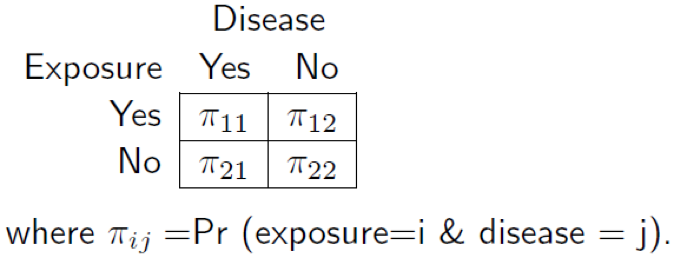


Useful Concept For Medical Healthcare Data Risk Prediction
Such guidelines exist, but either the odds ratio (OR) or the relative risk (RR) is fine You only have to be sure that you interpret either one correctly This is the advice given by Schmidt & Kohlmann (See below) Given that the relative risk is more intuitive, then it may be more advisable to use itRelative measures of effect are risk ratio (ie the ratio between two incidence proportions), incidence rate ratio (the ratio between two incidence rates), and OR (the ratio between two odds) The risk difference is an absolute measure of effect (ie the risk of the outcome in exposed individuals minus the risk of the same outcome in unexposed)Rather the odds is threefold greater Interpretation of an OR must be in terms of odds, not probability



Epidemiology Midterm Flashcards Quizlet


Www Medschool Umaryland Edu Media Som Departments Anesthesiology Resources Faculty Development Fundamental Epidemiology Terminology And Measures It Really Is All In The Name Pdf
The simple relative risk is 055 and the simple odds ratio is 025Clearly the probability of fathering a child is strongly dependent on a variety of demographic variables, especially age (the issue of marital status was dealt with by a separate analysis) The control group was 84 years older on average (435 years versus 351), showing the need to adjust for this variableRisk ratios, odds ratios, and hazard ratios are three ubiquitous statistical measures in clinical research, yet are often misused or misunderstood in their interpretation of a study's results A 01 paper looking at the use of odds ratios in obstetrics and gynecology research reported 26% of studies (N = 151) misinterpreted odds ratios as risk ratios , while a 12 paper found similarThe odds ratio will be greater than the relative risk if the relative risk is greater than one and less than the relative risk otherwise In the example above, if the adjusted odds ratio were interpreted as a relative risk, it would suggest that the risk of antibiotic associated diarrhoea is reduced by 75% for the intervention relative to the



Odds Ratios Versus Relative Risk


Academic Oup Com Ije Article Pdf 24 2 464 24 2 464 Pdf
RELATIVE RISK, ODDS RATIO, ATTRIBUTABLE RISK AND NUMBER NEEDED TO TREAT An improved version of this article is now available in Third Edition (12) of the book We shortly explain odds but risk is the chance that a person without the disease will develop the disease in a defined period It can be any other event or outcome


3


Q Tbn And9gcr Ttka12jaocnx Gn3ox9ci1ggq18vcw9359i6hq2cschyusam Usqp Cau



View Image



Calculate Relative Risk With 95 Confidence Intervals



33 Epidemiology Ideas Cohort Study Case Control Study Study Design



A3 What Is The Odds Ratio For The Effect Of Exposure To Poverty Versus Course Hero
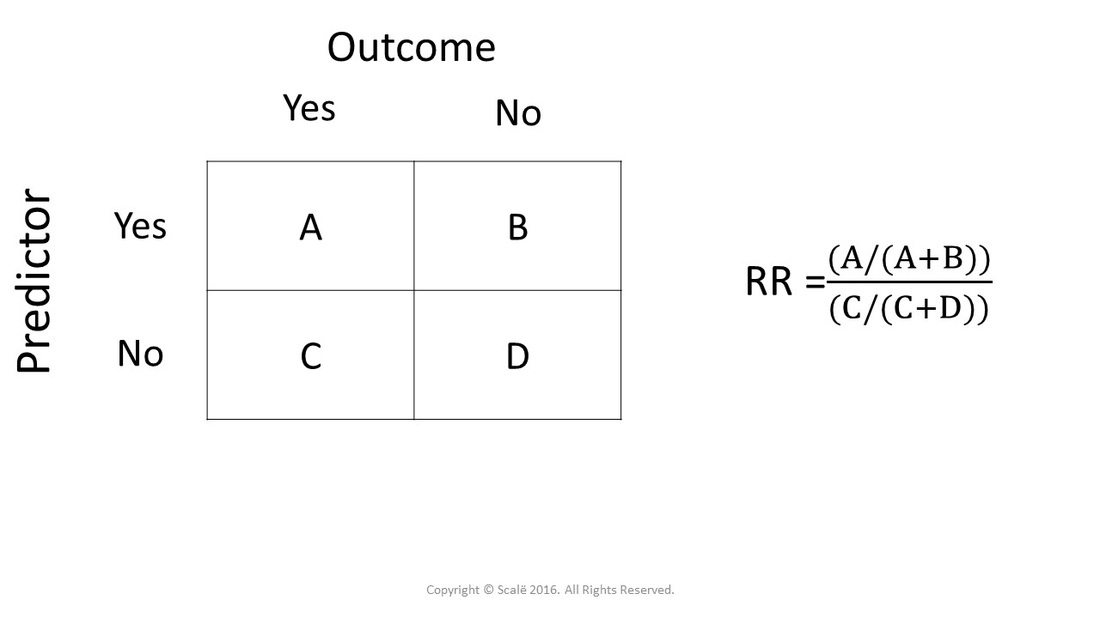


Calculate Relative Risk With 95 Confidence Intervals


Http Www Stat Colostate Edu Gumina St1 Pdf Categoricalanalysis Pdf



Reporting The Results Sage Research Methods



Using Odds Ratio In Case Control Studies Youtube



Cph Exam Review Epidemiology Ppt Download


Arxiv Org Pdf 1510


1



Relative Risk Odds Ratios Youtube
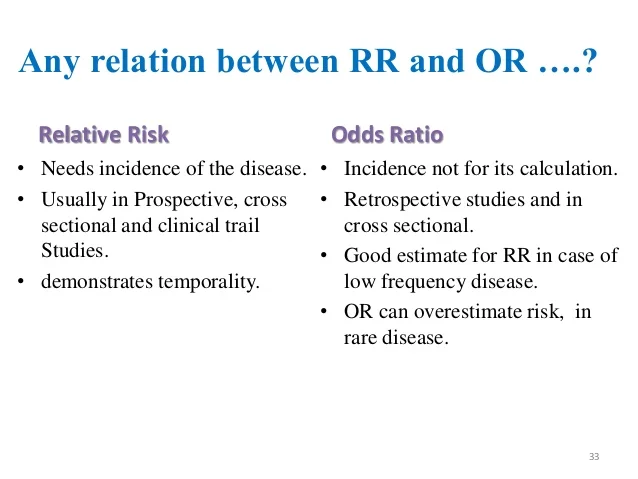


Measuring Of Risk



Hour 6 Estimating Risk Flashcards Quizlet



Believability Of Relative Risks And Odds Ratios In Abstracts Cross Sectional Study The Bmj
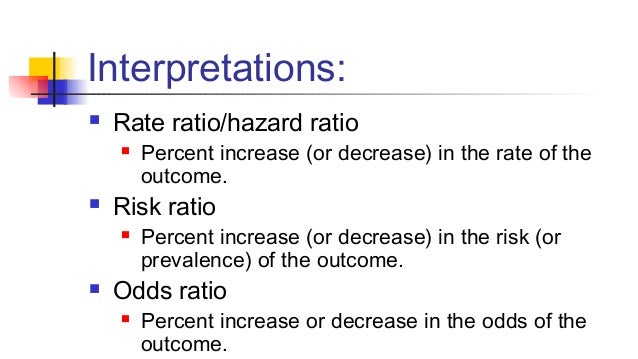


Math3010 Week 6
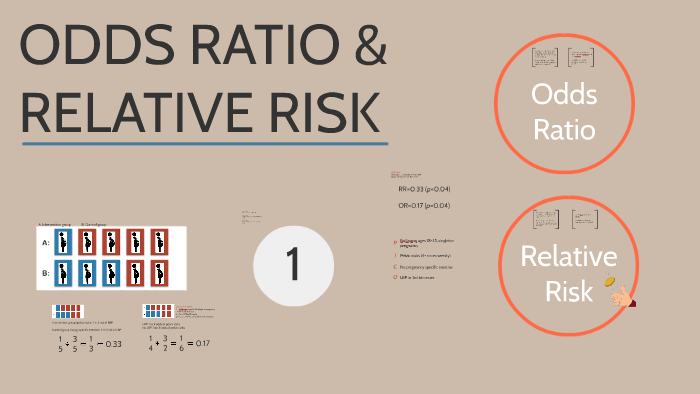


Odds Ratio Relative Risk By Susi Delaney


Relative Risk Ratios And Odds Ratios



Odds Ratios Vs Risk Ratios Stats By Slough


Ctspedia Ctspedia Oddsrisk



Math Formula To Reproduce A Plot Comparing Relative Risk To Odds Ratios Cross Validated



Relative Risk And Absolute Risk Definition And Examples Statistics How To
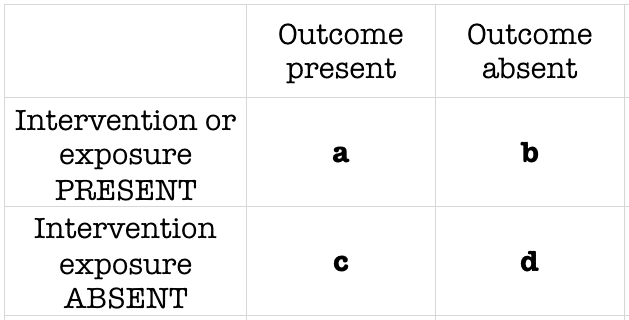


Odds Ratio Litfl Ccc Research


Introduction To Genetic Epidemiology Lesson 5 Analyzing The Data


Case Control Study Odds Ratio Relative Risk Best Custom Academic Essay Writing Help Writing Services Uk Online Homeworknowcomlink Web Fc2 Com



Cohort And Case Con Revised
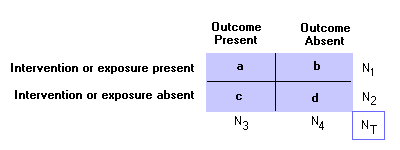


Epidemiology Glossary Physical Diagnosis Skills University Of Washington School Of Medicine



Measures Of Association Ppt Download



Estimating Risk



Cureus What S The Risk Differentiating Risk Ratios Odds Ratios And Hazard Ratios
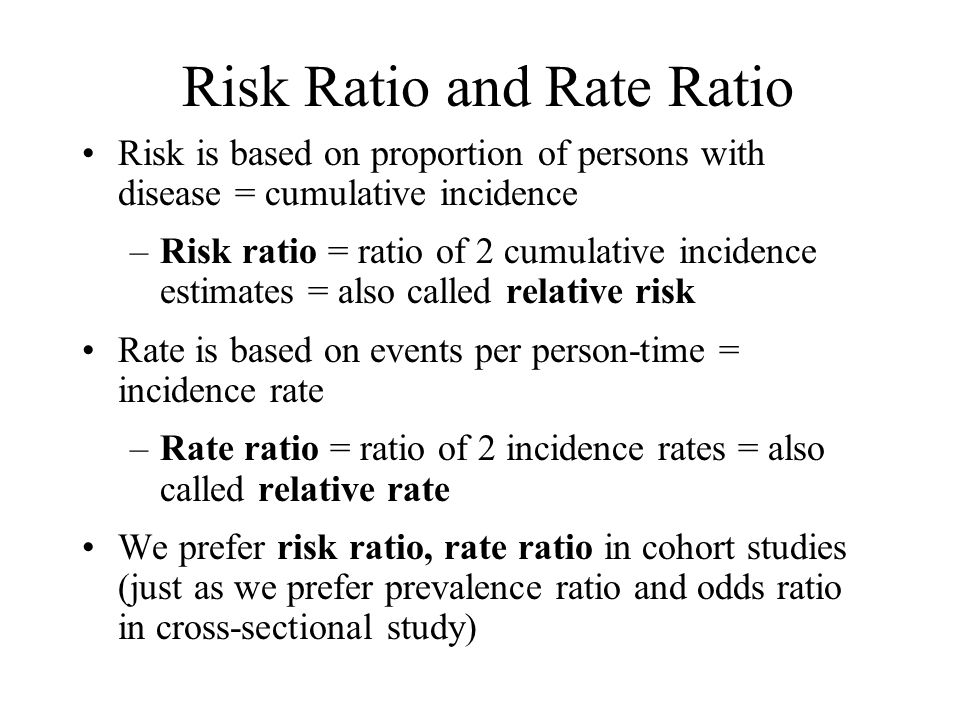


Measures Of Disease Association Ppt Download



Hsrp 734 Advanced Statistical Methods June 5 Ppt Video Online Download



Forest Plot Of Relative Risks And Odds Ratios Of Lung Cancer Associated Download Scientific Diagram


Silo Tips Download Transcript Measuring Risk In Epidemiology B D A C Measuring Risk In Epidemiology



Relative Risks And Odds Ratios What S The Difference Mdedge Family Medicine


Research Statistics Basics Contents 1 Basic Concepts 2 References Basic Concepts Null Hypothesis The Hypothesis That The Independent Variable Has No Effect On The Dependent Variable For Example Steroids Do Not Improve Outcomes In Ards Would Be


6 7 8 9 10 11 12 13 14 15 16 17 18 19 21 22 23 24 25 26 27 28 29 30 Review Incidence And Prevalence Are Formally Defined On Slide 7 Birth And Death Rates Are Also Estimates Of Absolute Risk Risk Factors Are Identified By Determining



Image Result For Difference Between Odds Ratio And Relative Risk Cross Sectional Study Hazard Ratio Odds



Chapter 6 Choosing Effect Measures And Computing Estimates Of Effect Cochrane Training



Analytical Studies



Definition And Calculation Of Odds Ratio Relative Risk Stomp On Step1



When Can Odds Ratios Mislead The Bmj



Effect Sizes Basicmedical Key
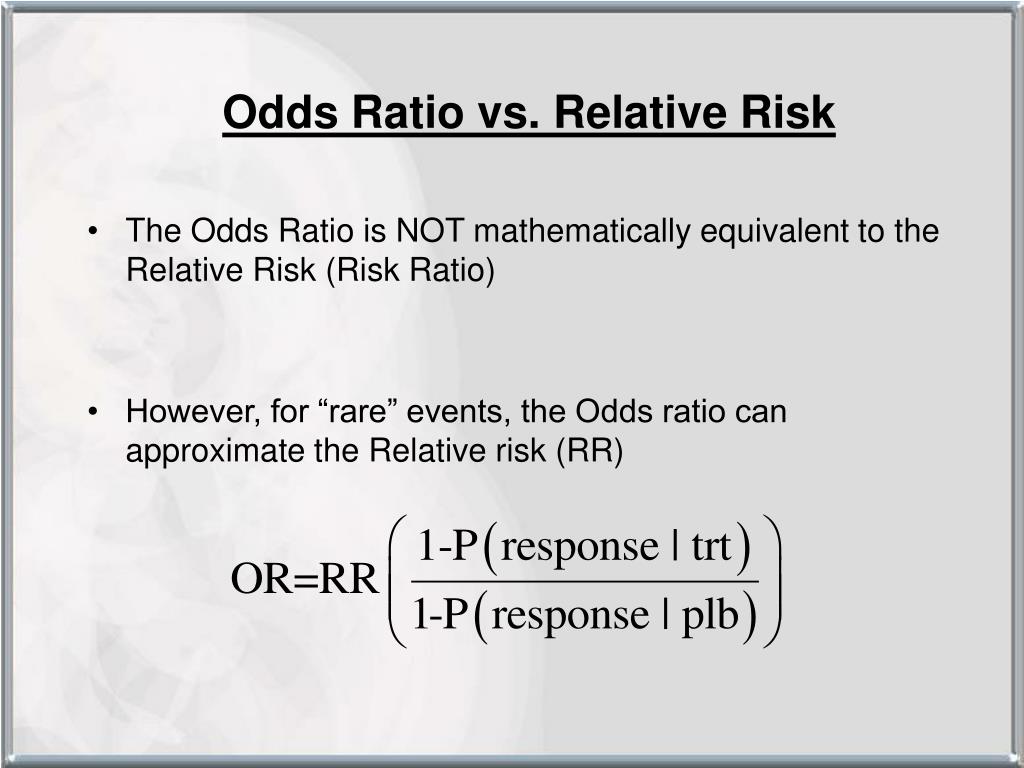


Ppt Hsrp 734 Advanced Statistical Methods June 5 08 Powerpoint Presentation Id



Absolute Risk Vs Relative Risk Vs Odds Ratio Pp Made Easy In Population Perspective Made Easy On Vimeo



Relative Risk And Odds Ratio Usmle The Journey


Literature Search


Q Tbn And9gcs7g3 Oy3gxo7fbk7uvklwexnnbqcmd7m5bqd Ghq64ww9hd4dh Usqp Cau
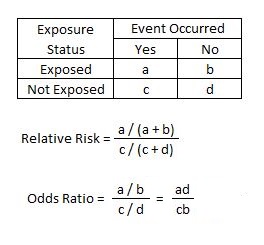


Relative Risk Article



Relative Risk Wikipedia


Introduction To Genetic Epidemiology Lesson 5 Analyzing The Data



Relation Between The Odds Ratio Relative Risk And Baseline Risk
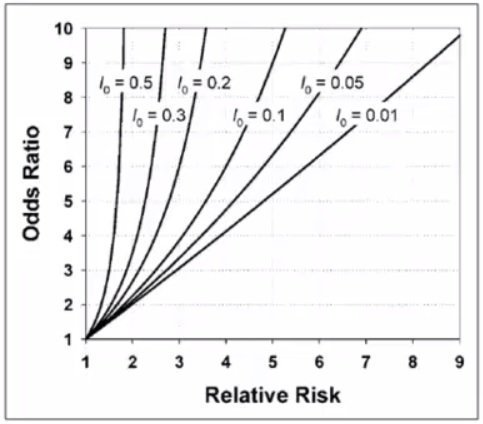


Cecile Janssens A Reminder That Odds Ratios Massively Overestimate Relative Risks When Outcome Is Common In The Population Or By Study Design E G Case Control Studies Io Is Proportion Of Cases



Calculation Of Relative Risks Rr And Odd Ratios Or Download Table


Studying Studies Part I Relative Risk Vs Absolute Risk Peter Attia



Relative Risk Versus Odds Ratio Usmle Biostatistics 4 Youtube


Case Control Study Wikipedia



Confidence Interval For Relative Risk Ppt Video Online Download



Risk Differences And Rate Differences



The Difference Between Relative Risk And Odds Ratios The Analysis Factor



Relative Risk Wikipedia



Pdf When To Use The Odds Ratio Or The Relative Risk Semantic Scholar



Absolute Risk Vs Relative Risk Vs Odds Ratio Pp Made Easy In Population Perspective Made Easy On Vimeo



What Is The Difference Between The Risk Ratio Rr And The Odds Ratio Or Quora



Common Measures Of Association In Medical Research Handout


Relative Risk Vs Odds Ratio Authorstream



The Odds Ratio Calculation Usage And Interpretation Biochemia Medica



Absolute Risk Vs Relative Risk Vs Odds Ratio Pp Made Easy In Population Perspective Made Easy On Vimeo


Http Www Math Usu Edu Corcoran Classes Old 04fall51 Notes Lecture04 Pdf



Odds Ratios And Risk Ratios Youtube



Odds Ratios Versus Relative Risk



Definition And Calculation Of Odds Ratio Relative Risk Stomp On Step1



0 件のコメント:
コメントを投稿